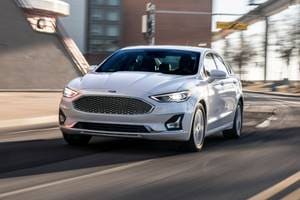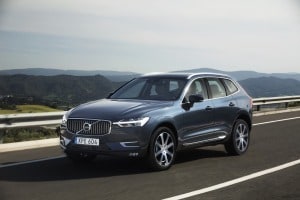Millennials Take the Wheel

The Great Recession hit the auto industry hard, with new car sales falling from 16.1 million in 2007 to a low of 10.4 million in 2009. The new car market especially suffered from a loss of purchases by its youngest buyers — the 18 to 34 year olds, commonly known as the "Millennials." The share of sales to this age group fell almost 30 percent from 2007 to 2011. Then, in 2012 — a year that brought 13 percent year-over-year growth to auto sales, Millennial buyers came back to the market in force, improving their share of sales to just over 20 percent less than 2007 levels. What's more, they have largely maintained these share gains so far in 2013. Improving income and employment, more household formations, and increased consumer confidence all contributed to the boost in Millennial car buying. While economic challenges remain, improving fundamentals indicate this generation — long feared to be uninterested in driving and cars — could finally be joining the ranks of new car buyers in earnest.

Recent Growth in Millennial Share of Sales
Young adults aged 18 to 34 accounted for nearly 30 percent less of new cars bought in 2011 than in 2007, according to new car registration data from Polk. Yet, this group's share of the total U.S. population remained stable during the past five years and, despite decreases in licensed drivers among the younger members of the group, the share of licensed drivers aged 18 to 34 also barely changed. But, with higher unemployment, lower income, and a greater propensity to live at home than previous generations at this age, it hardly comes as a surprise that these younger adults have failed to buy new cars at the same rate as their predecessors.
Accordingly, it was good news for the auto industry when the Millennials showed the first signs of a comeback in 2012. New car purchases by Millennials not only grew with the rest of the market but Millennials actually outpaced all other age groups (except the 75 and over buyers) and thereby increased their share of sales as well. What's more, Millennials gained share in every income group (except the under-$15,000 bracket) compared to other age groups.

Millennial Behavior Suggests They Might "Like" Cars after All
Increased new car buying by Millennials is not the only good news for the auto industry. What they are buying is also encouraging — specifically, luxury and sports cars. Even though the Millennials' overall share of sales is smaller, in every income group except the highest ($150,000 and over), aged 25 to 34 Millennials buy luxury cars to a similar extent or more as older buyers with same income. Plus, in nearly every income group, 18 to 24 year old Millennials purchase a greater share of entry and midrange sports cars than the older buyers.
These purchase patterns challenge the commonly held fear of industry observers that Millennials are less interested in owning cars than previous generations were. This view stems from the decrease in car buying by Millennials as well as from their delay in getting driver's licenses, their apparent lack of need to own a car due to socializing via social networking and preference for urban living, and their tendency to drive less when they do own cars. The above findings indicate that the problem could be one of economics rather than preferences because when Millennials do buy cars, they aren't more likely than older car buyers to choose simple, utilitarian vehicles. That is, the Millennials' relatively stronger preferences for luxury and sports cars suggests that they are interested in cars as more than just a means to get around. That interest bodes well for car sales if the Millennials can overcome their economic problems.


Some Key Factors Now Support Millennial Car Buying
So, what changed to boost Millennial car buying? First of all, economic conditions improved for this age group. In particular, for the 25 to 34 year olds — the segment that buys over 90 percent of new cars in the 18 to 34 age group, the unemployment rate fell from 8.7 percent in February 2012 to 7.8 percent in February 2013. More importantly, their unemployment rate declined even as their labor force participation increased for the first time since the recession began. The combination of a lower unemployment rate and more workers in the market means that more actual jobs were created. The under-25 year olds saw positive changes as well. Despite rising unemployment rates, 2011 year-over-year median income growth for this group was nearly 8 percent — higher than any other age group and well above the market growth of 2 percent.
As a result of this progress, household formation surged in 2012, averaging nearly 1 million net new units per month compared to less than 600,000 per month on average during 2008 to 2011. New car sales had suffered as Millennials delayed setting up households. Young adults living at home or with roommates typically have less need for their own cars due to the opportunity to share a car with other members of their households, but young adults living on their own are more likely to need their own cars — and more likely to be able to afford them.
Additionally, new car sales have likely profited from the famous optimism of youth. Young people tend to be more confident than their older counterparts and the gap between the confidence levels of under-35 year olds and the 35 and over crowd widened in 2012. All else equal, having more confident consumers translates into more car buying.
Roadblocks to Millennial Car Buying Remain
While 2012 improvement suggests that Millennial new car buying has turned a corner, there are still obstacles to the growth of car purchases by this group. For starters, the job market remains very tough for under-25 crowd. Double digit unemployment rates persist for the youngest segment of the labor force despite that fact that its labor force participation rates have continued to fall and are at their lowest levels since at least 2003.
Meanwhile, the older Millennials — the 25 to 34 year olds — continue to struggle with slow income growth. From 2010 to 2011 (the most recent year available), their median household income grew 1.8 percent but as in the previous three years, failed to keep pace with inflation. This growth rate is particularly concerning since the older Millennials tend to be in the first ten years of their careers, the period during which 70 percent of raises typically occur.
The Millennials' job and income issues are compounded by the fact that they are entering the workforce with significantly more student loan debt than previous generations. This higher debt burden impedes their ability to qualify for other loans, including car loans.
2013 Outlook
Despite these roadblocks, Millennials managed to show signs of strength in the new car market in 2012. Additionally, during 2013 to date, Millennials earning $100,000 or more continued to gain share over other age cohorts in the same income brackets. While lower-earning Millennials (and Millennials as a whole) did lose some of their 2012 share gains, they have kept their 2013 share of sales above the 2011 level. And, although Millennials still substantially under-buy compared to their share of population, the gap between their population share and their share of new car purchases is shrinking.
More importantly, there are signs that the economic factors supporting Millennial buying will remain in play. The labor market recovery continues to make progress, with roughly 160,000 jobs added per month in 2013 to date. Jobs and income growth will ease the student loan burden on Millennials, making car payments more feasible and encouraging household formation. Indeed, forecasts call for more household formation in the coming years, with the younger Millennials in particular contributing. Taken together, these growth factors suggest more growth in car purchases to come from the youngest generation of drivers.
Lacey Plache is the Chief Economist for Edmunds.com. Follow @AutoEconomist on Twitter.





